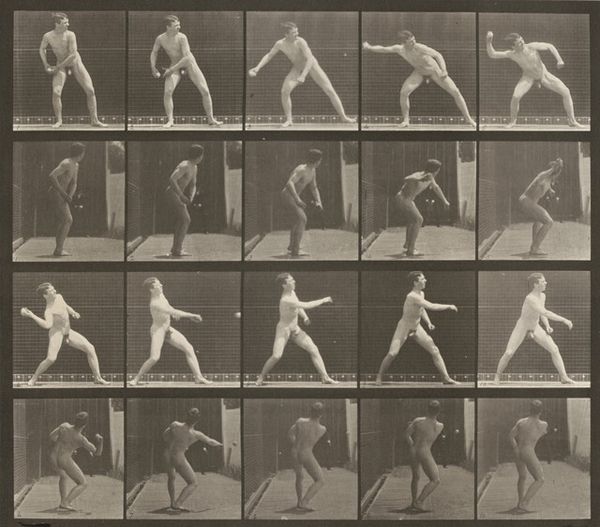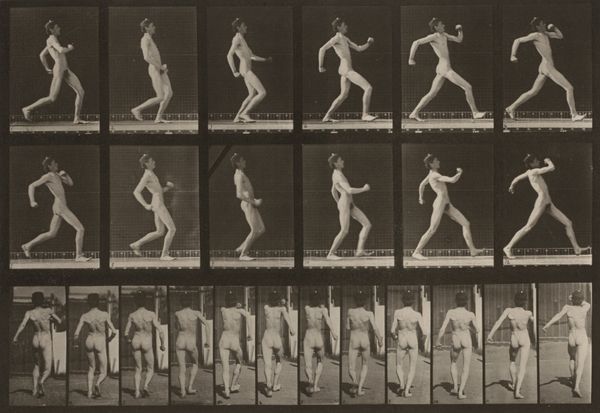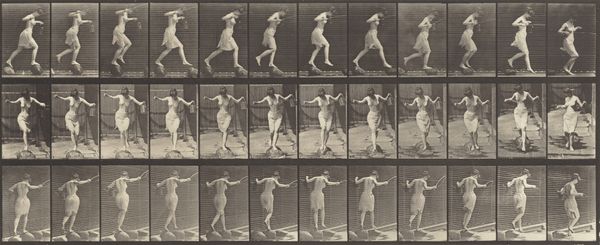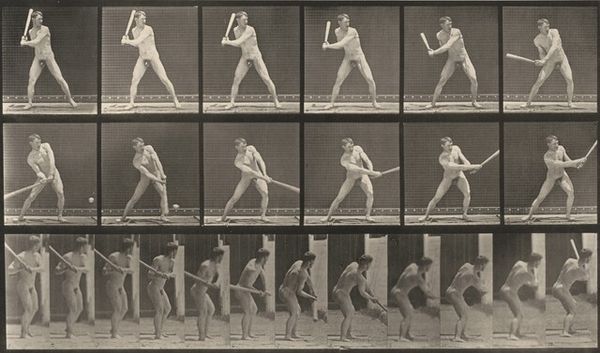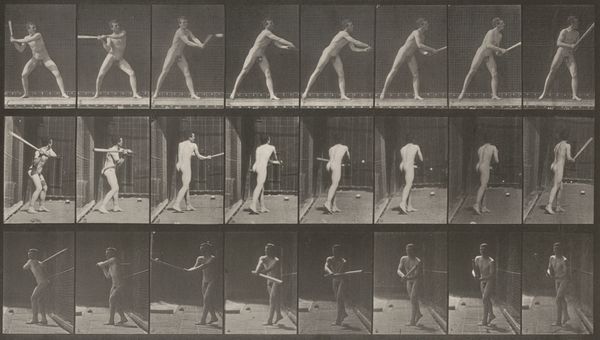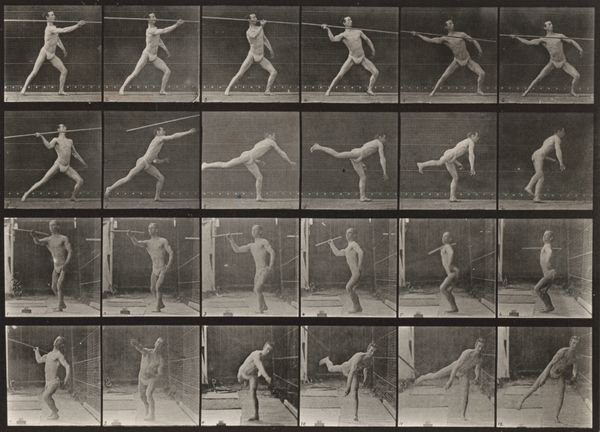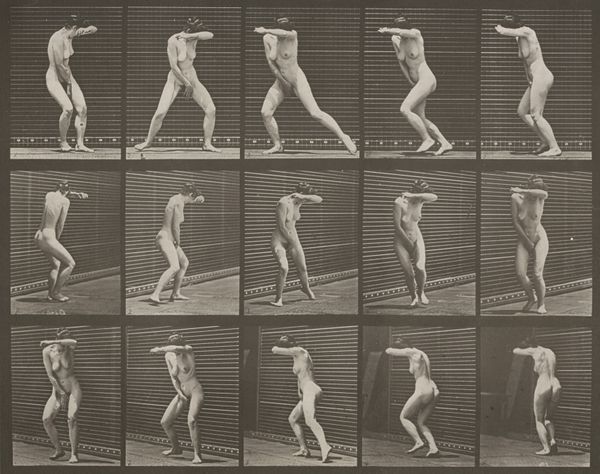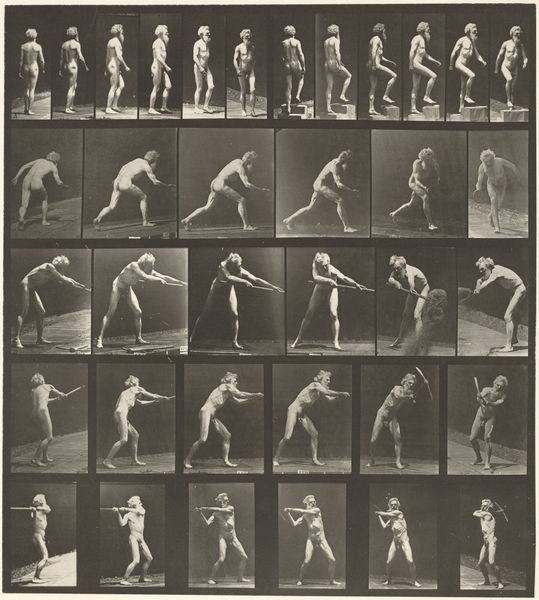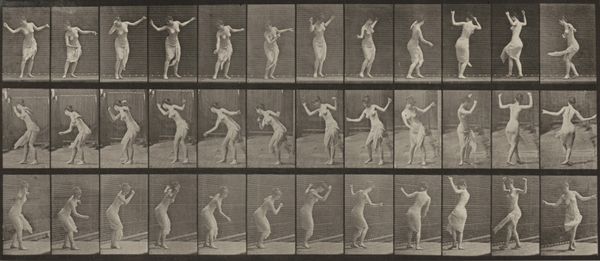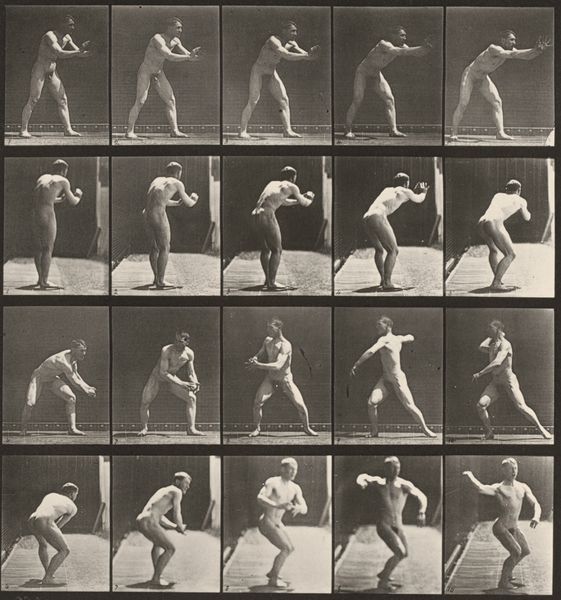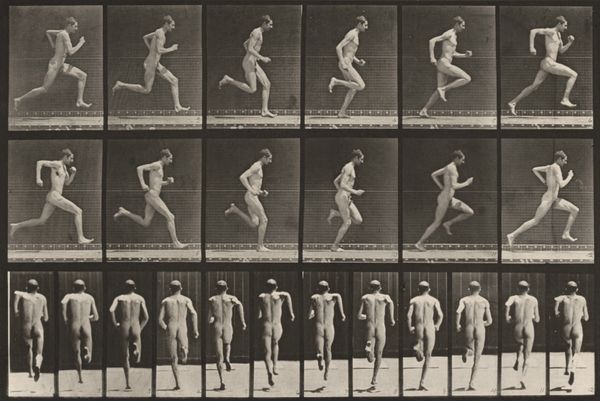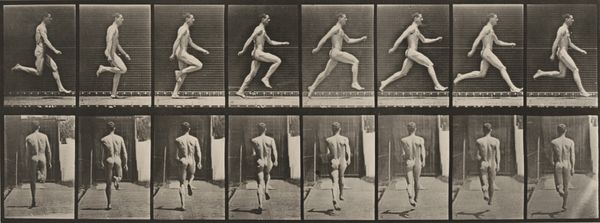
print, photography, gelatin-silver-print
#
action-painting
#
kinetic-art
# print
#
figuration
#
photography
#
gelatin-silver-print
Dimensions: image: 24.8 × 28.5 cm (9 3/4 × 11 1/4 in.) sheet: 48.6 × 61.1 cm (19 1/8 × 24 1/16 in.)
Copyright: National Gallery of Art: CC0 1.0
Editor: This is "Plate Number 274. Baseball, batting" by Eadweard Muybridge, created in 1887. It's a gelatin-silver print showing the stages of a baseball swing. What strikes me is how scientific yet also strangely intimate it feels, almost like a secret revealed about the human form. How do you interpret the social implications of Muybridge’s photography in this historical moment? Curator: It's a fascinating image, isn't it? Think about what Muybridge was attempting here – not just freezing motion, but dissecting it, cataloging it for scientific study. This wasn't simply about art; it was about claiming knowledge and control over the body at a time when scientific positivism was deeply intertwined with social progress and even notions of racial and class hierarchies. What is the subject of these early motion studies being a nude male athlete communicating in regards to 19th-century art institutions, if anything? Editor: So the image is communicating social and power dynamics. Were these photos intended for public consumption, or were they meant for a more private, scientific audience? Curator: That's a key question! While Muybridge published these studies, including in "Animal Locomotion", their accessibility was complex. The intended audience was likely a blend of scientists, artists, and upper-middle-class patrons interested in both the science and the spectacle. These images were simultaneously presented as objective data and artistic novelties, fueling debates about the role of photography in representing reality, especially when that reality involved the human body. Did it affect or reinforce ideas about gender or social roles at the time? Editor: I never considered that there was an intention to represent bodies in a certain way and to serve a role in that historical moment. This perspective gives me a completely new way to look at his works. Curator: Exactly! Considering those social factors allows us to understand Muybridge’s experiments in terms of both their scientific innovations and the broader cultural landscape that shaped their production and consumption.
Comments
No comments
Be the first to comment and join the conversation on the ultimate creative platform.
